Install Passbolt CE on Digital Ocean
Since march 2019 it is possible to install passbolt easily directly from Digital Ocean. Digital Ocean is an hosting provider based in the USA. In order to run passbolt you will need the following:
- A Digital Ocean account
- A domain name for example passbolt.yourdomain.com
- Some level of access to point your DNS records to the new passbolt server
1. Create the droplet in Digital Ocean
The first step is to login in Digital Ocean (or create and setup an account). You can then head to Marketplace and search for passbolt.
It is recommended at the point that you have domain name (or subdomain). It is not mandatory but highly encouraged. Since passbolt web extension is tied to a domain name it will be easier to get it right upfront rather than using the IP address and changing the proper domain name later.
Go to the marketplace and search for passbolt, select the card and click on create droplet.
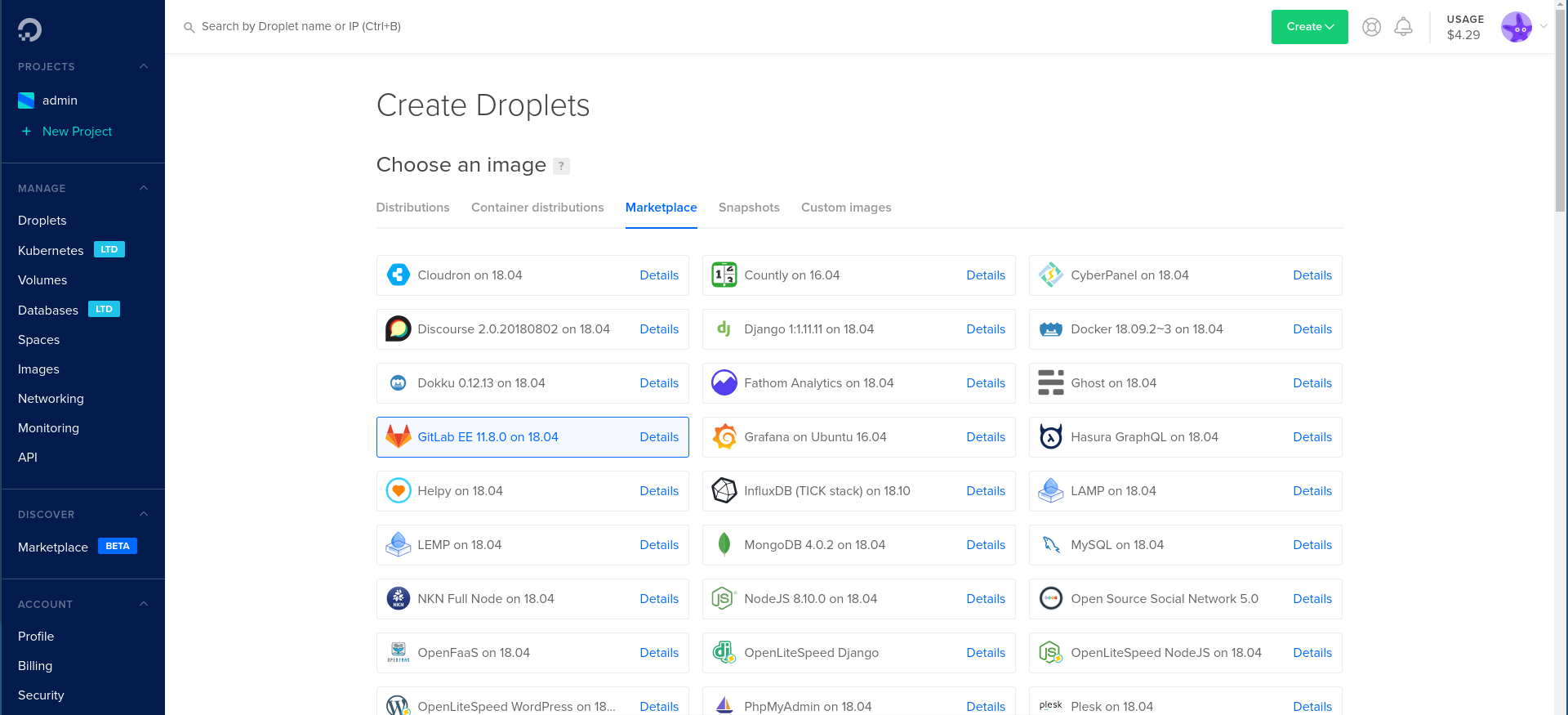
Choose a plan and the associated server matching at least the following requirements:
- 1 GB
- 1 CPU
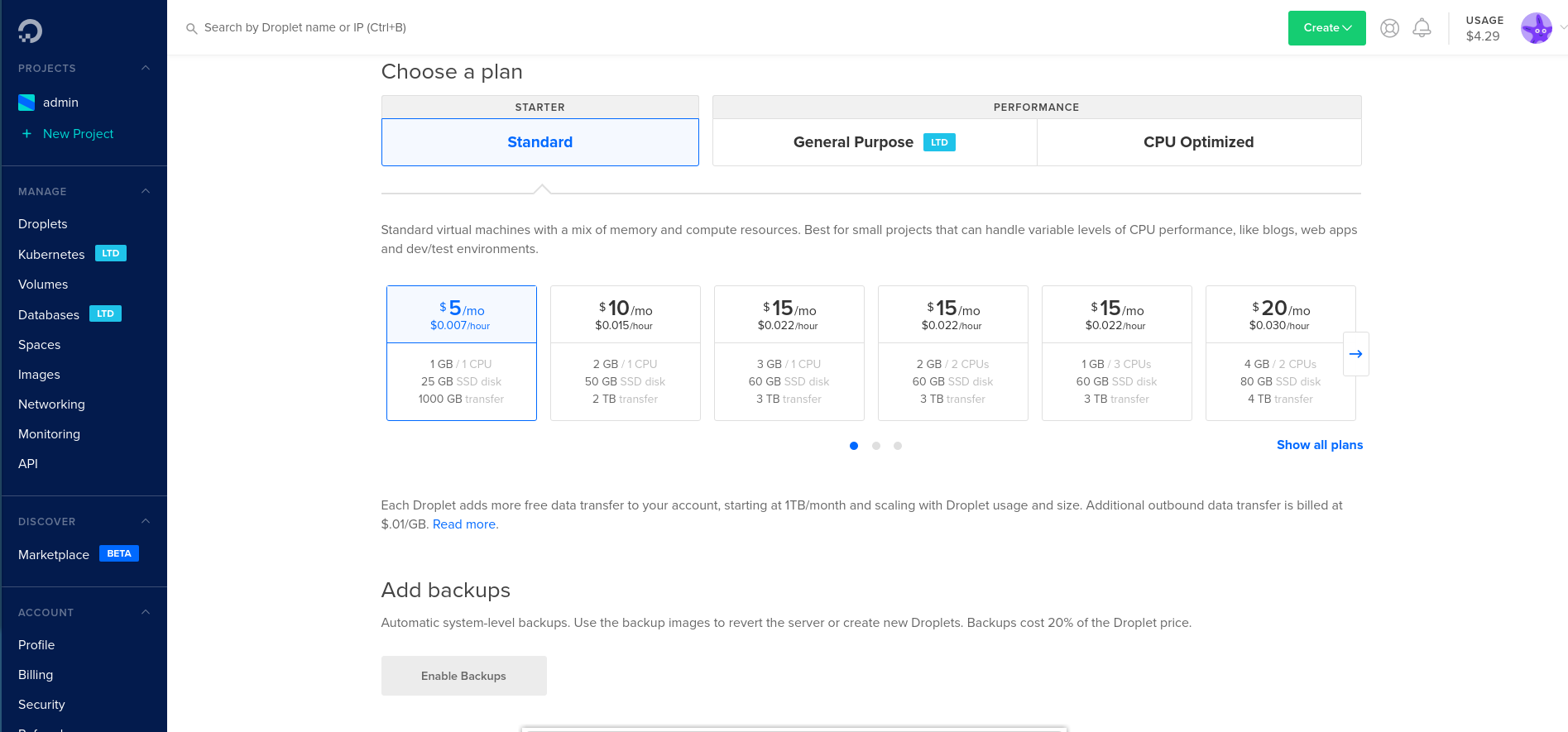
Select your preferred datacenter region, and select additional options. You can upload your SSH keys to login into the machine once it's created. Choose a hostname and click create.
Grab a cup of coffee and get ready.
Once created you can see the droplet was assigned an IP address. You can copy it and check if it is reachable and up and running.
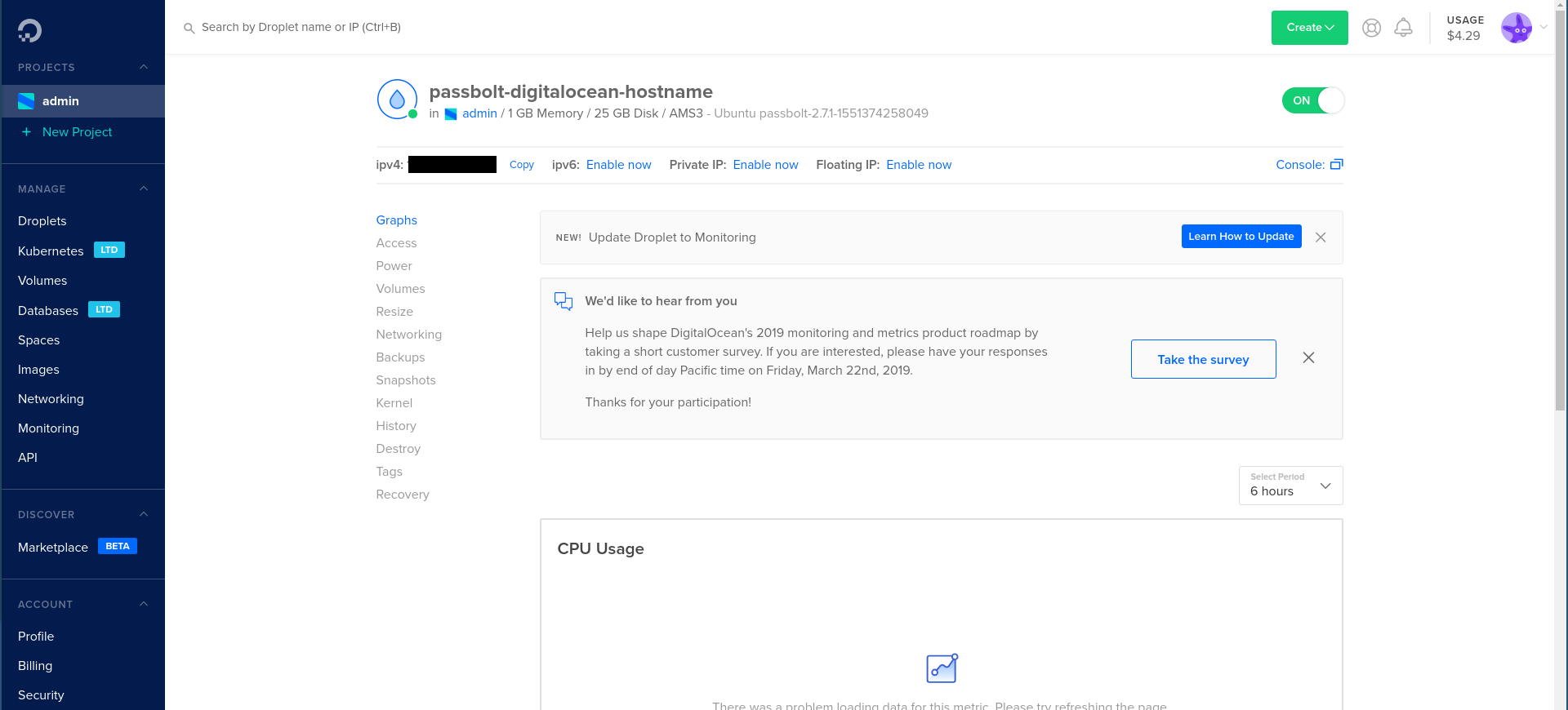
1.1. Setup your DNS to point to the droplet
Next you need to point your domain DNS to this machine IP address. Please check Digital Ocean DNS documentation or your domain name provider help for this.
Wait until the DNS propagation is done. To check if it is done, ping your domain and it should resolve to this droplet IP. You can also check the propagation using online tools.
Configure nginx for serving HTTPS
Depending on your needs there are two different options to set up nginx and TLS (SSL):
2. Configure passbolt
Before you can use the application, you need to configure it. Point your browser to the hostname / ip where passbolt can be reached. You will reach a getting started page.
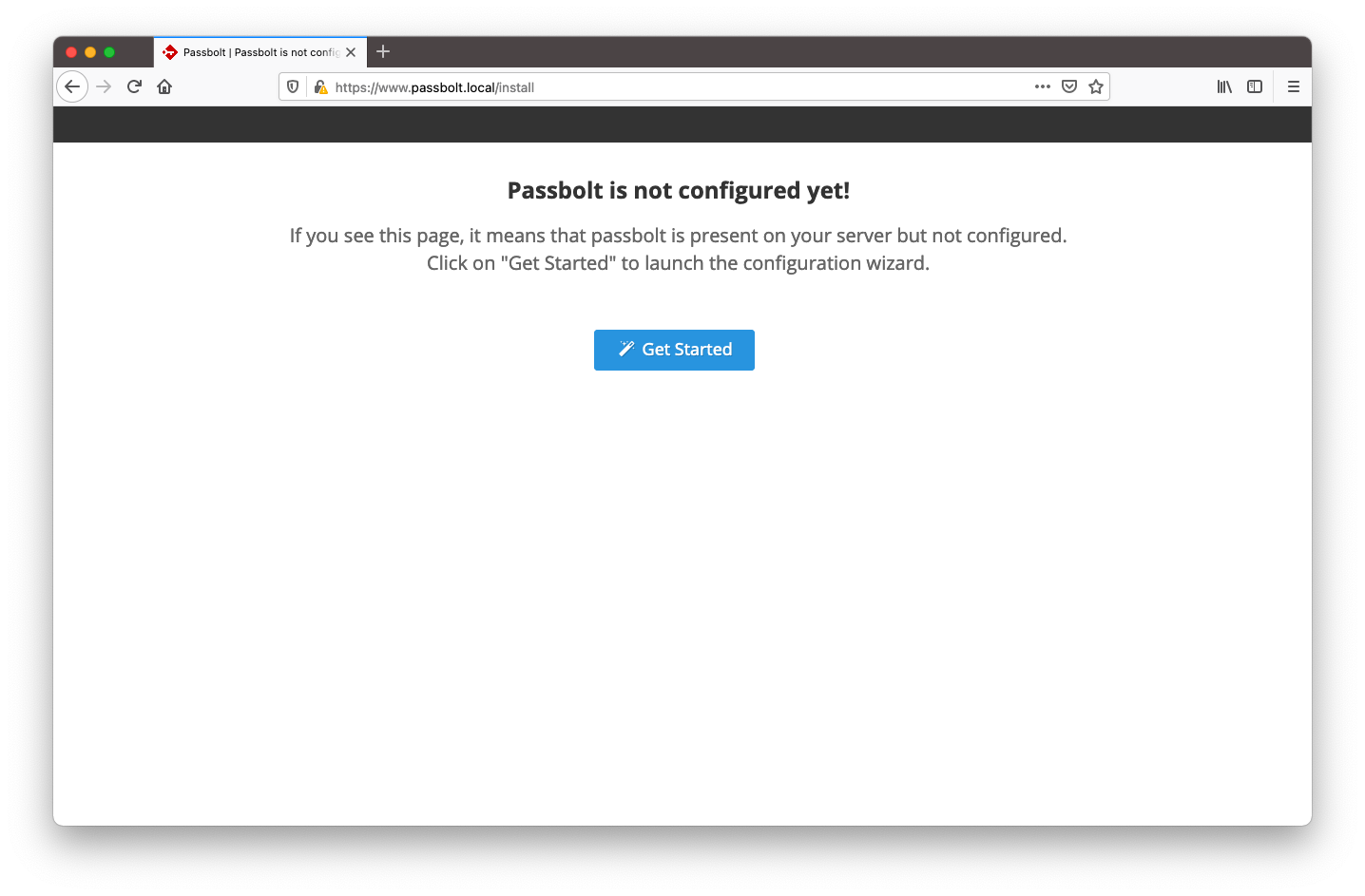
2.1. Healthcheck
The first page of the wizard will tell you if your environment is ready for passbolt. Solve issues if any and click on "Start configuration" when ready.
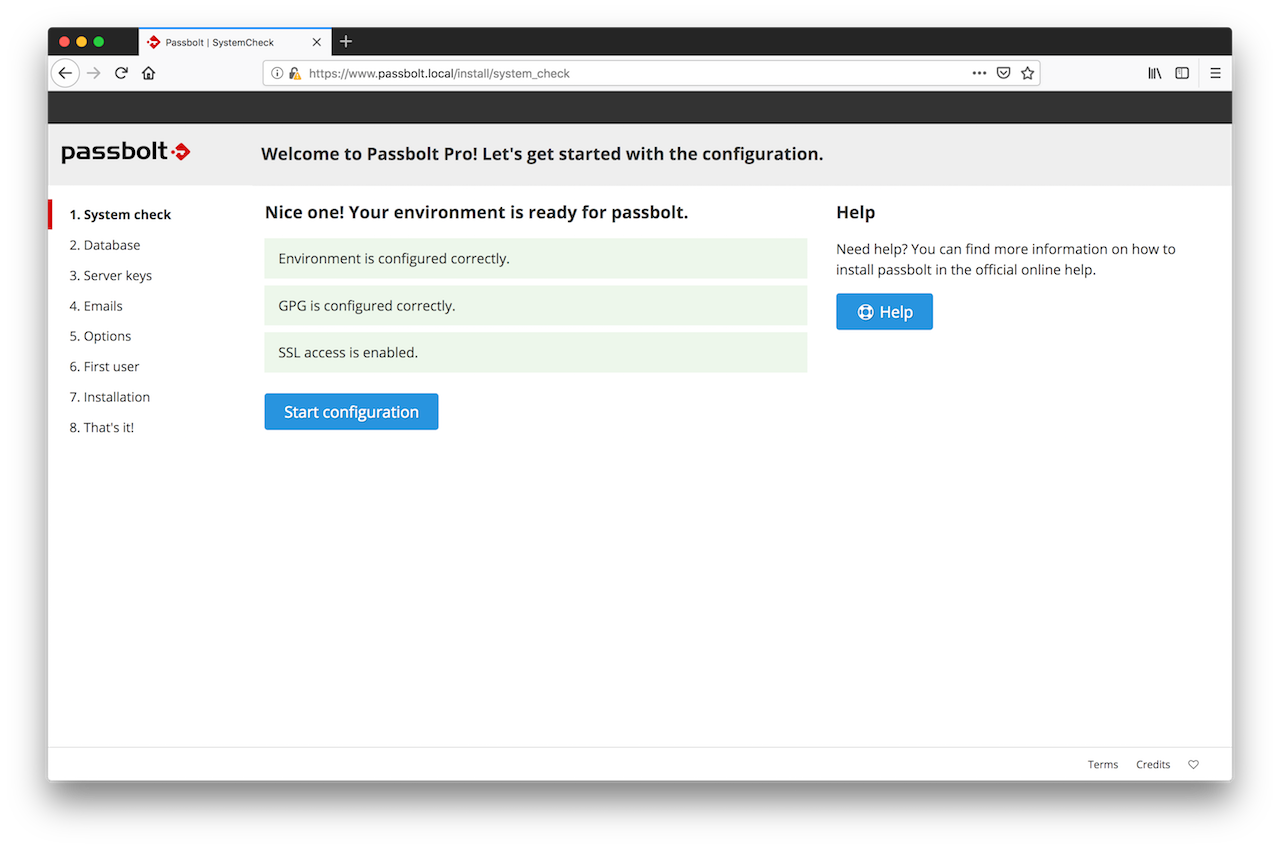
2.2. Database
Passbolt Digital Ocean comes with a preinstalled mariadb database. The credentials for this database are randomly generated on the first boot and the webinstaller autofills those credentials for you.
The autogenerated database credentials will be available for later use by administrators in /etc/passbolt/passbolt.php file.
If you decide to use the autogenerated credentials you can click the "Next" button and move to the next step on this tutorial.
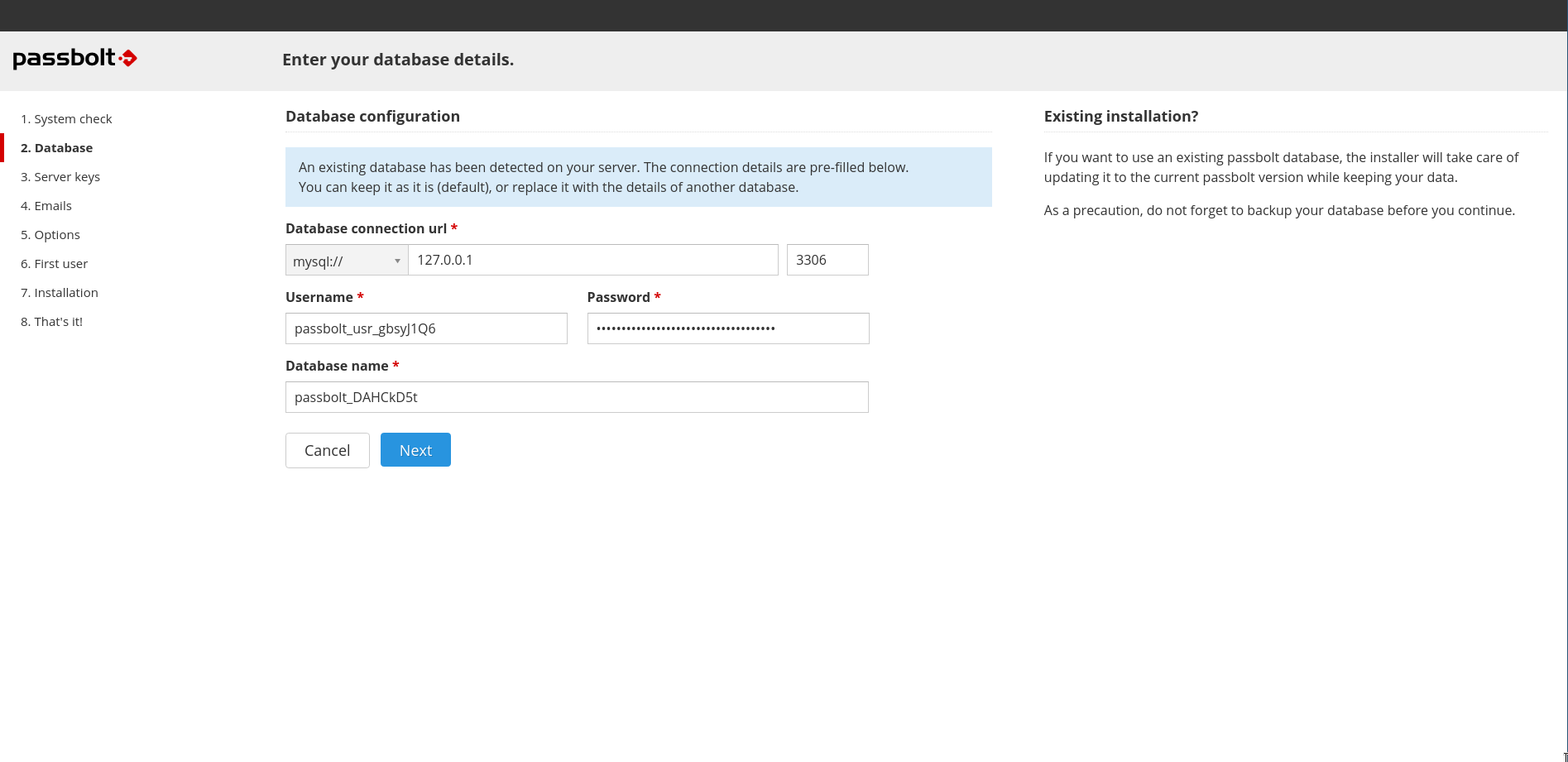
Optional: In case you do not want to use the autogenerated mariadb credentials you could connect through ssh to your instance and use the mariadb root credentials to create a new user, password and database for passbolt to use:
ssh admin@your_domain|instance_ipYou can find the root database credentials in /root/.mysql_credentials file:
sudo cat /root/.mysql_credentialsOnce you have the root database credentials you can connect to the local mariadb and create any database and user you want to use to install passbolt.
2.3. GPG Key
In this section you can either generate or import a GPG key pair. This key pair will be used by passbolt API to authenticate itself during the login handshake process. Generate a key if you don't have one.
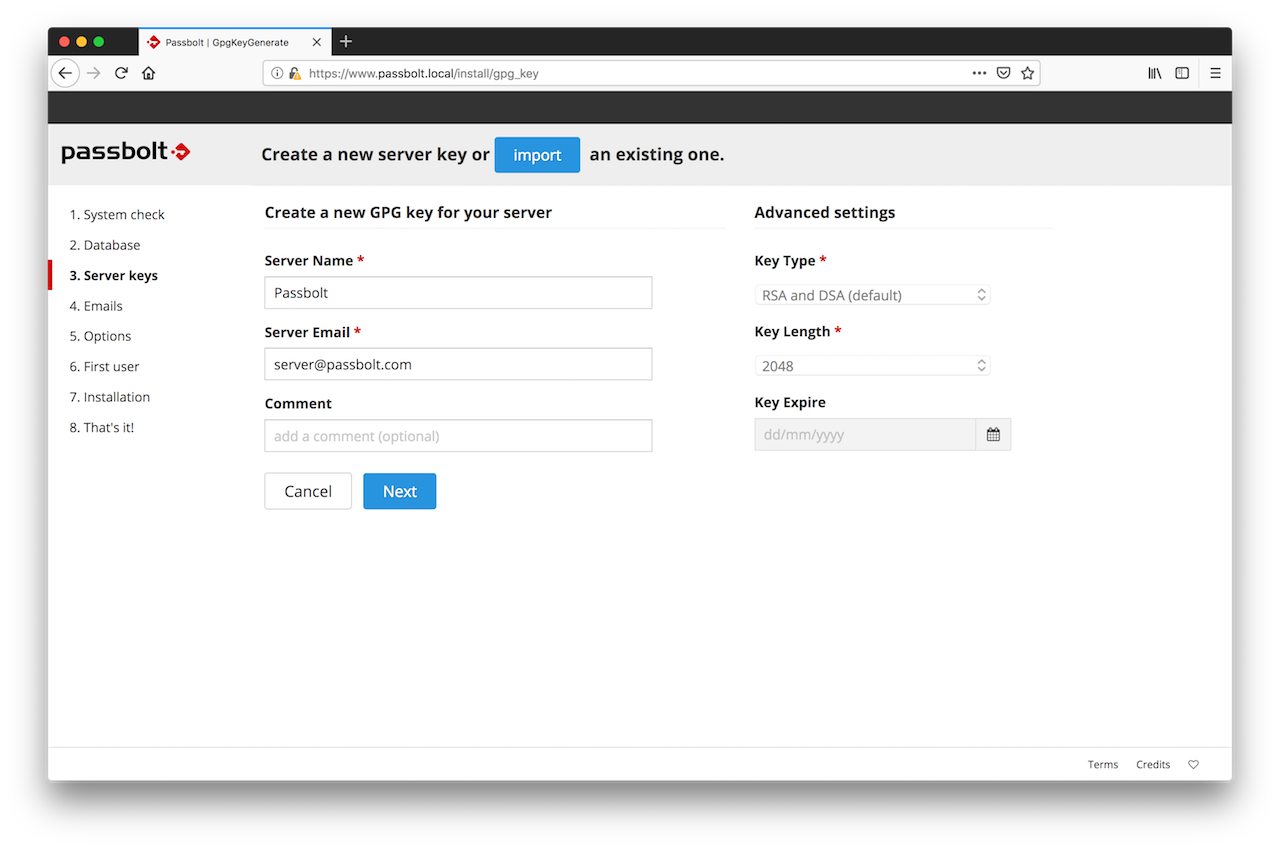
Import a key if you already have one and you want your server to use it.
Since GnuPG 2.2.0+, the default key type is ECC (Curve25519/Ed25519) instead of RSA. However, ECC keys may not support passphrase-less generation reliably across all environments or configurations. We recommend using RSA explicitly to ensure consistent passphrase-less key generation.
To create a new GnuPG key without passphrase:
gpg --batch --no-tty --gen-key <<EOF
Key-Type: RSA
Key-Length: 3072
Key-Usage: sign,cert
Subkey-Type: RSA
Subkey-Usage: encrypt
Subkey-Length: 3072
Name-Real: John Doe
Name-Email: [email protected]
Expire-Date: 0
%no-protection
%commit
EOF
Feel free to replace Name-Real and Name-Email with your own.
To display your new key:
gpg --armor --export-secret-keys [email protected]
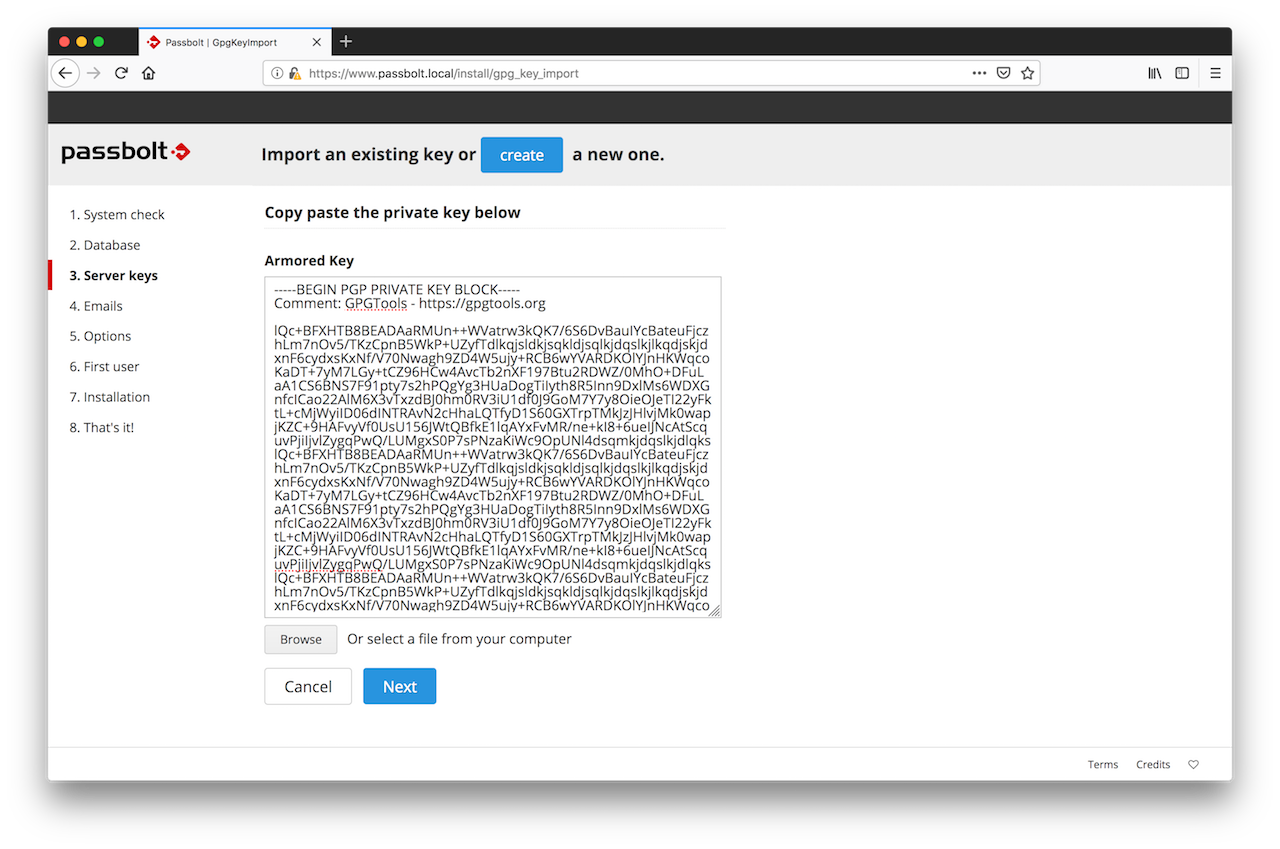
2.4. Mail Server (SMTP)
DigitalOcean blocks all outbound SMTP ports (25, 465, 587) by default on new accounts to reduce spam and abuse for a 60 days period.
To send transactional or notification emails from your applications, use a dedicated email-delivery service rather than running your own SMTP server on a Droplet. Popular options include:
SendGrid: No SMTP ports required, plus built-in analytics, deliverability tools, and scalable plans.
AWS SES: If you already use AWS, SES offers a cost-effective, high-deliverability API.
Other providers: Services like Mailgun, Mailchimp, or Mailjet also provide SMTP-alternative APIs. Choose the one that best fits your needs.
At this stage, the wizard will ask you to enter the details of your SMTP server.
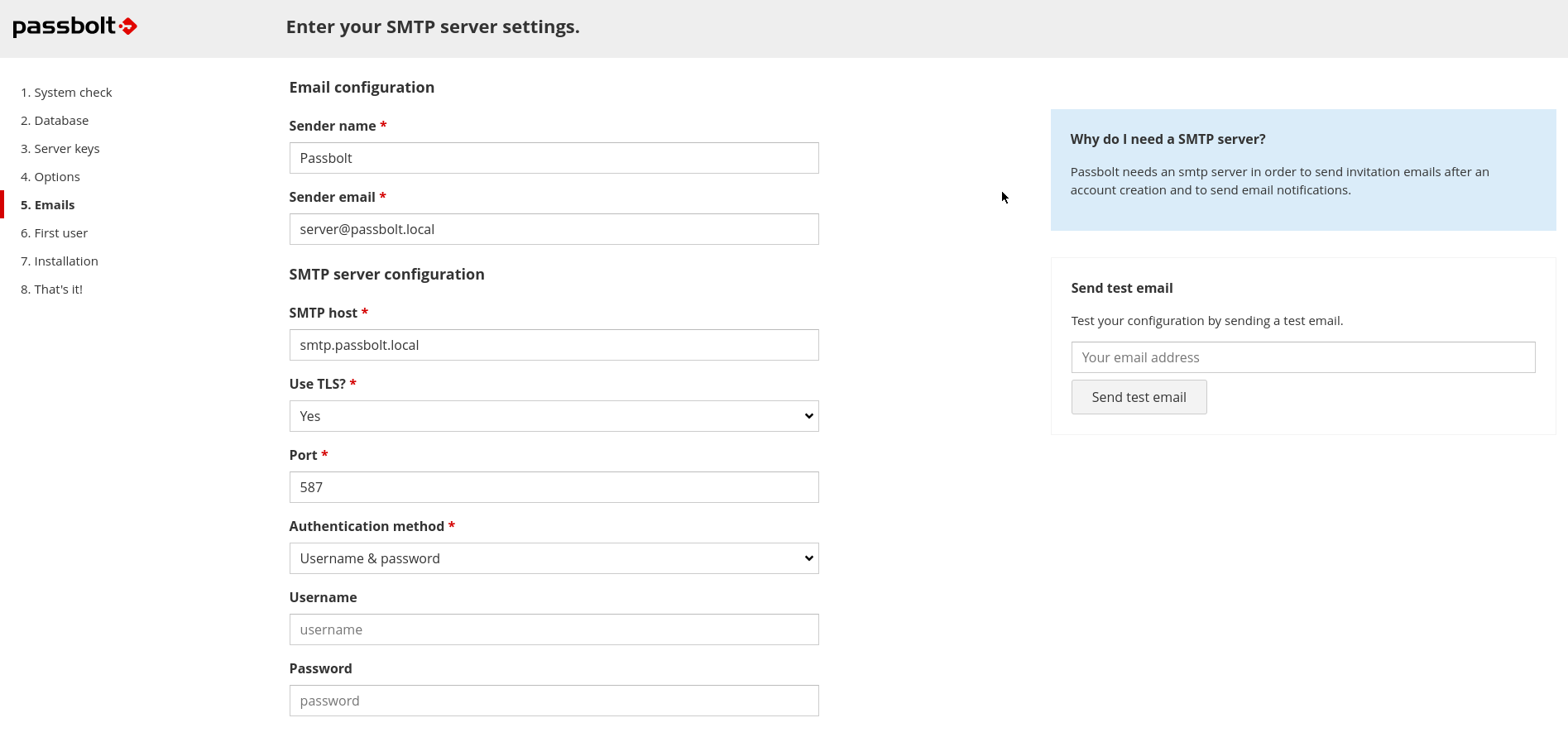
You can also test that your configuration is correct by using the test email feature at the right of your screen. Enter the email address at which you want the wizard to send you a test email and click on "Send test email".
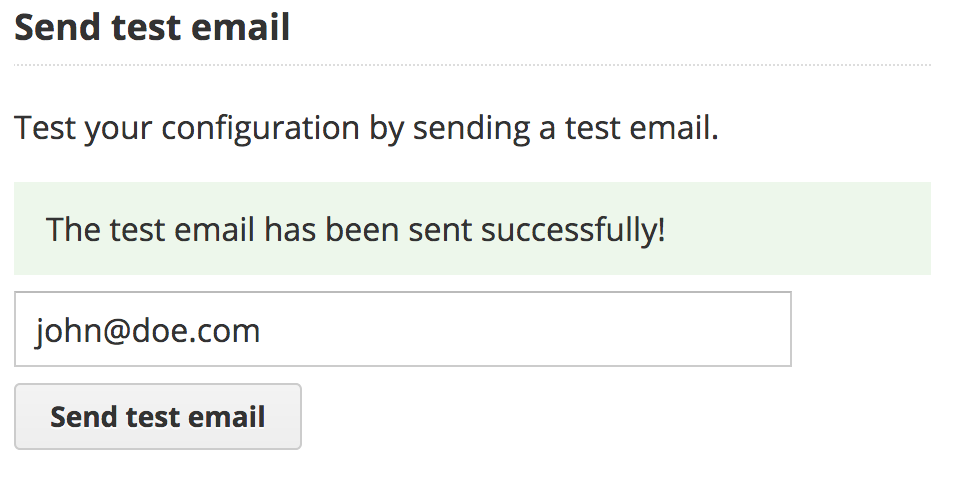
2.5. Preferences
The wizard will then ask you what preferences you prefer for your instance of passbolt. The recommended defaults are already pre-populated but you can also change them if you know what you are doing.

2.6. First User Creation
You need to create the first admin user account. This first admin user is probably you, so enter your details and click on next.
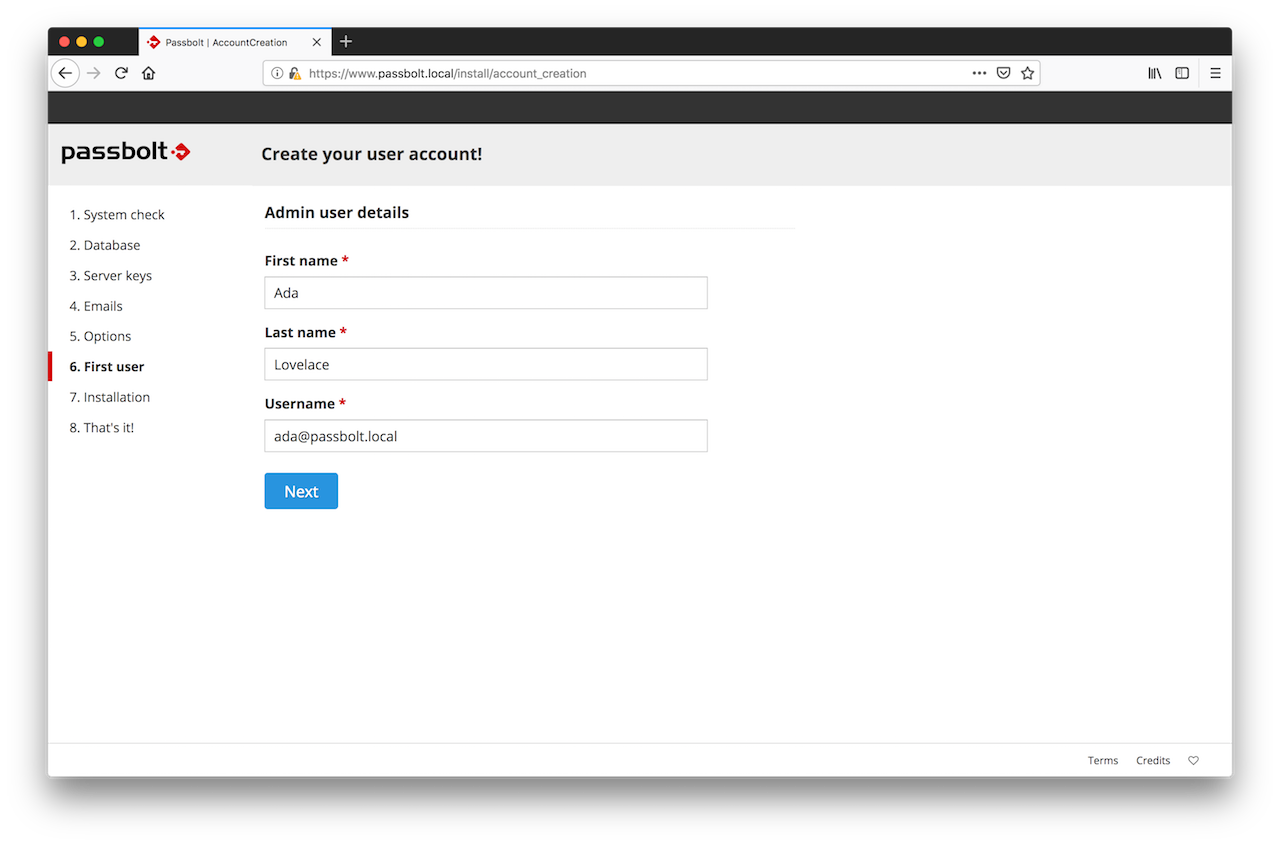
2.7. Installation
That's it. The wizard has now enough information to proceed with the configuration of passbolt. Sit back and relax for a few seconds while the configuration process is going on.
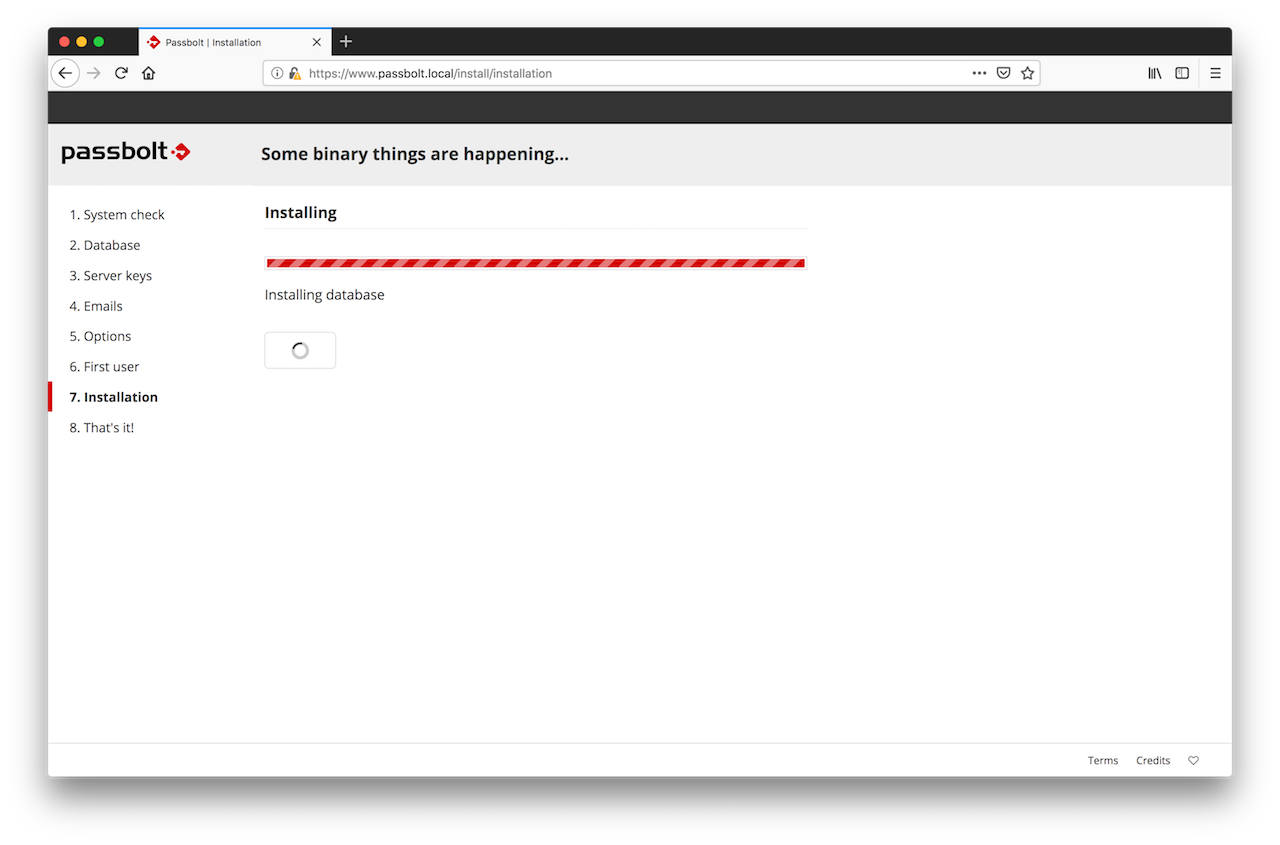
Your user account is now created. You will see a redirection page for a few second and then will be redirected to the user setup process so that you can configure your user account.
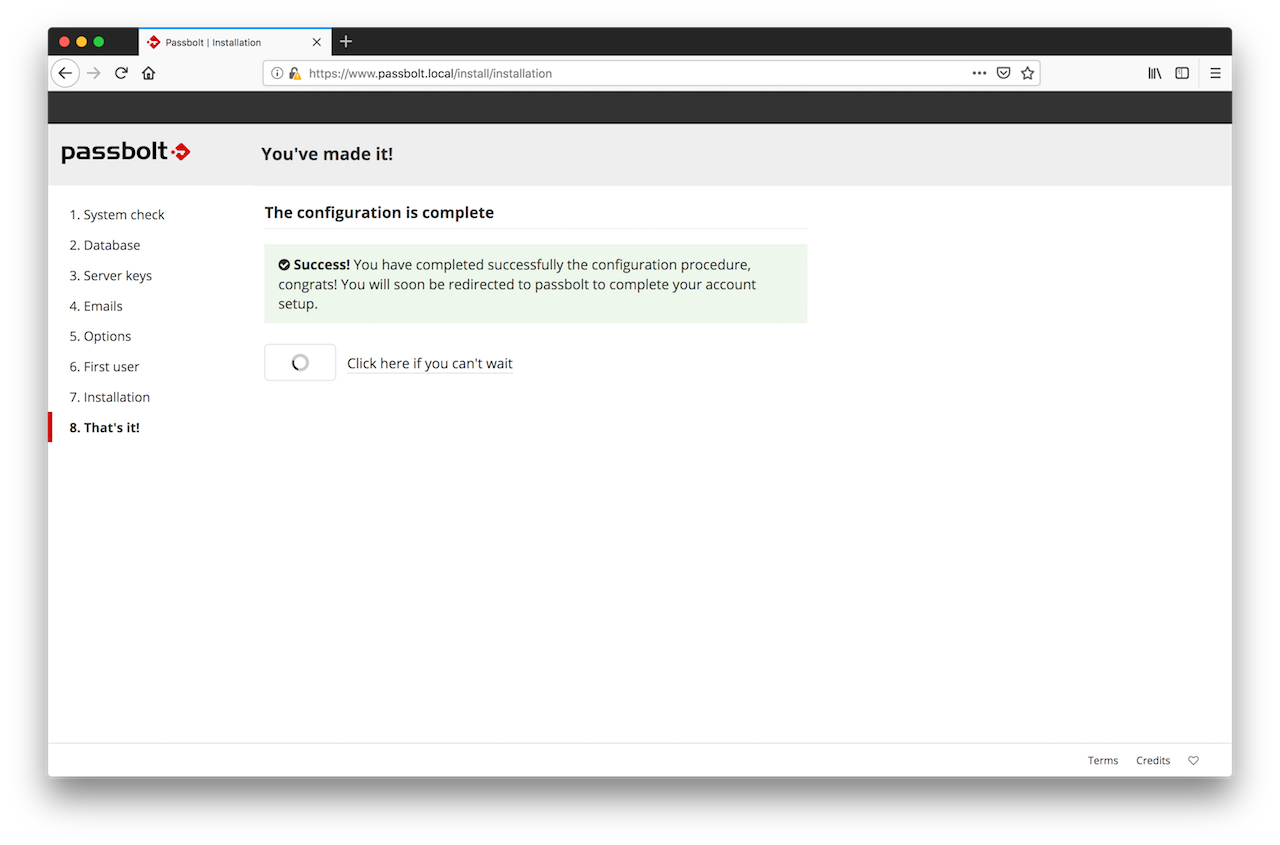
3. Configure your administrator account
3.1. Download the browser extension
Before continuing passbolt will require you to download its browser extension. If you already have it installed you can go to the next step.
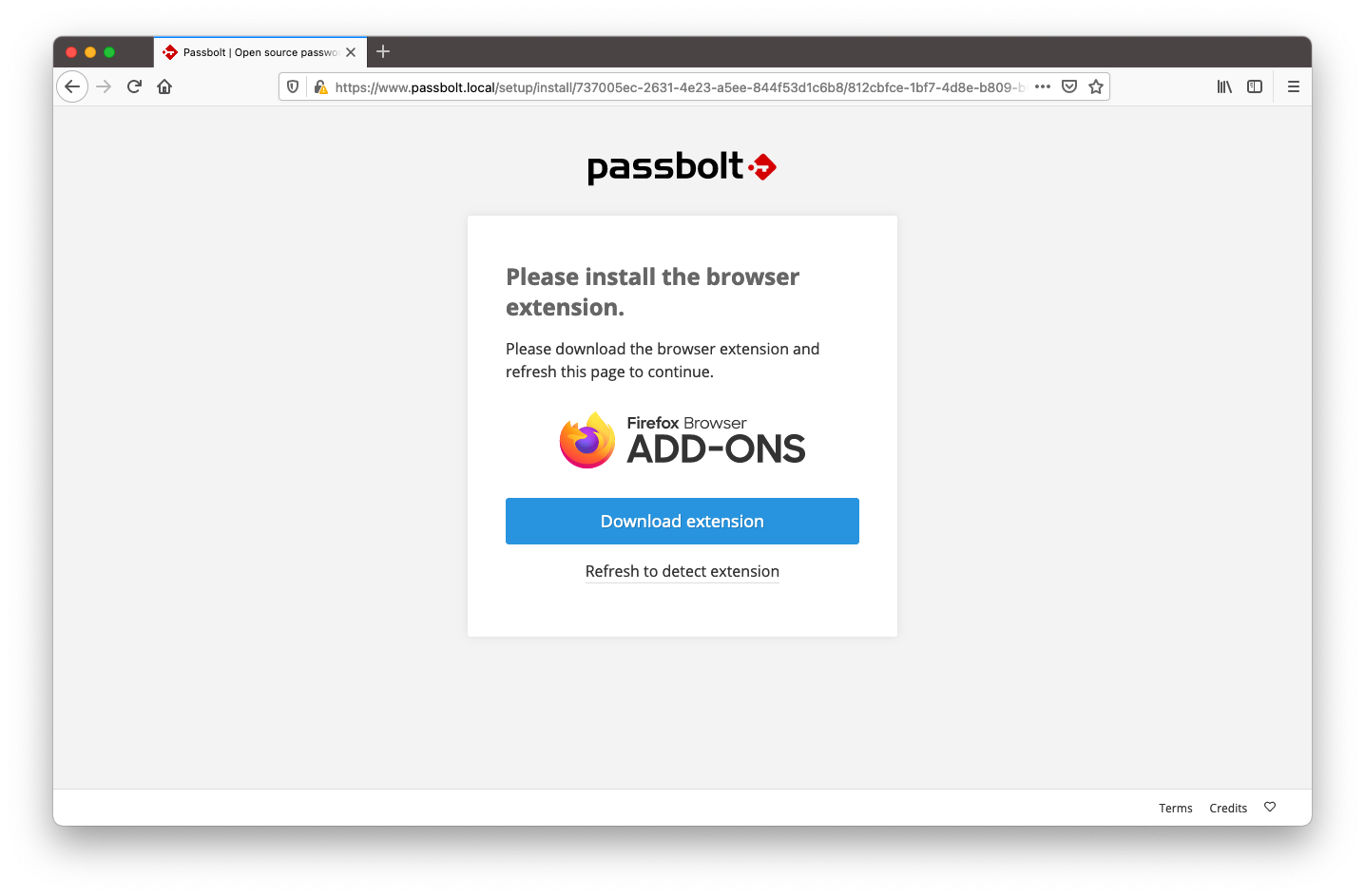
3.2. Create a new key
Passbolt will ask you to create or import a key that will be later use to identify you and encrypt your passwords. Your key needs to be protected by a password. Choose it wisely, it will be the gatekeeper to all your other passwords.
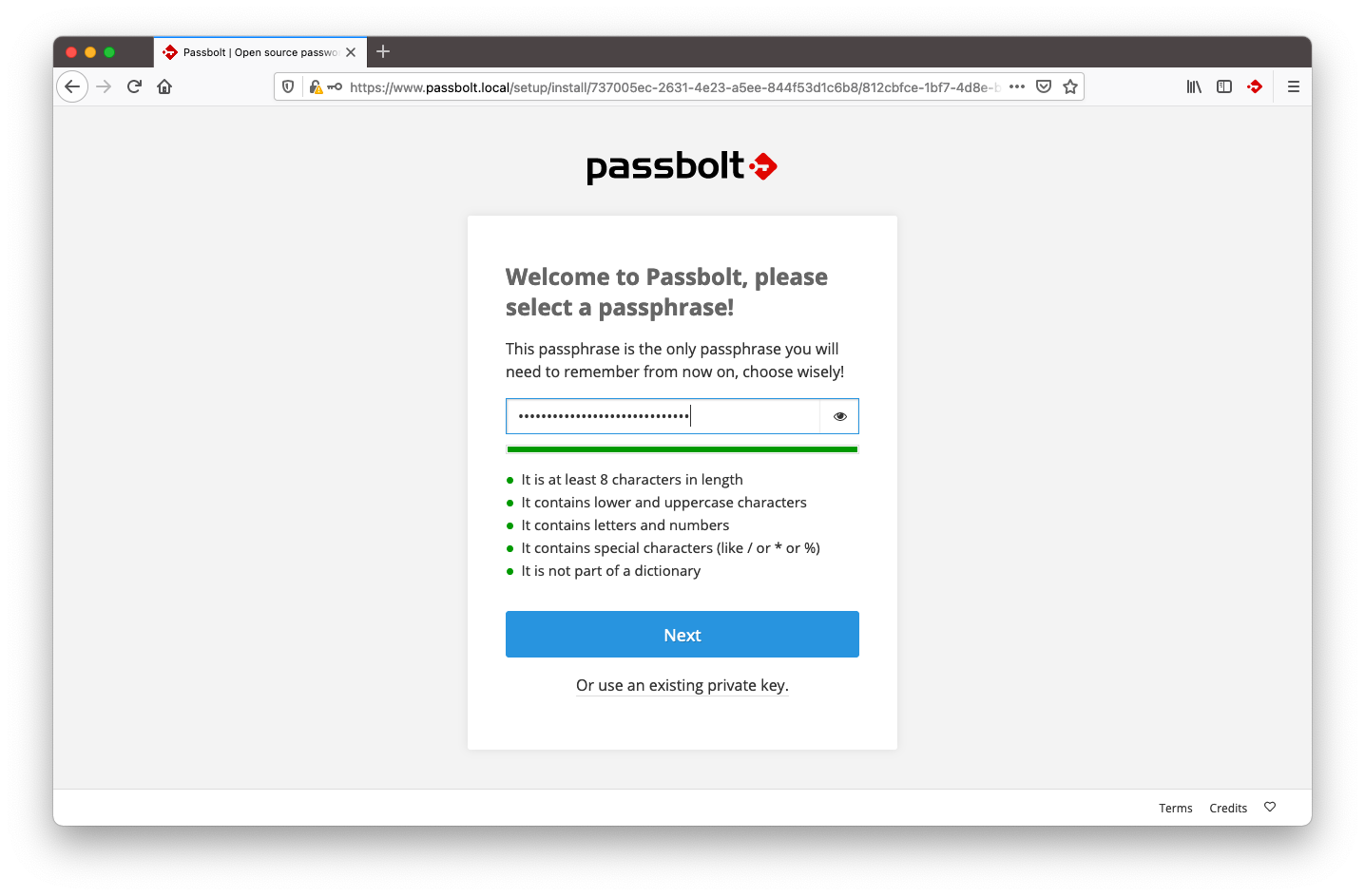
3.3. Download your recovery kit
This step is essential. Your key is the only way to access your account and passwords. If you lose this key (by breaking or losing your computer and not having a backup for example), your encrypted data will be lost even if you remember your passphrase.
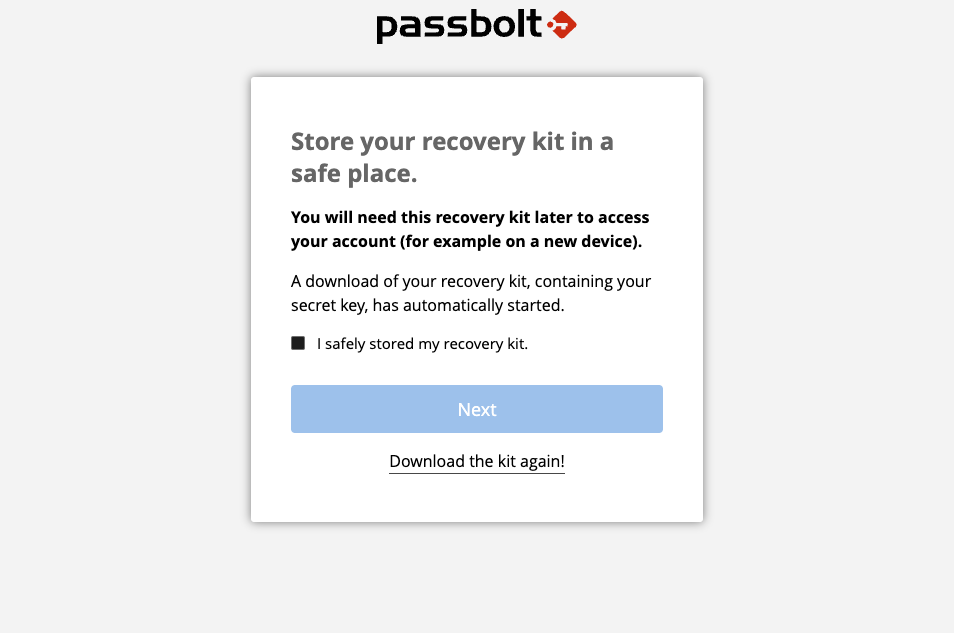
3.4. Define your security token
Choosing a color and a three characters token is a secondary security mechanism that helps you to mitigate phishing attacks. Each time you are performing a sensitive operation on passbolt, you should see this token.
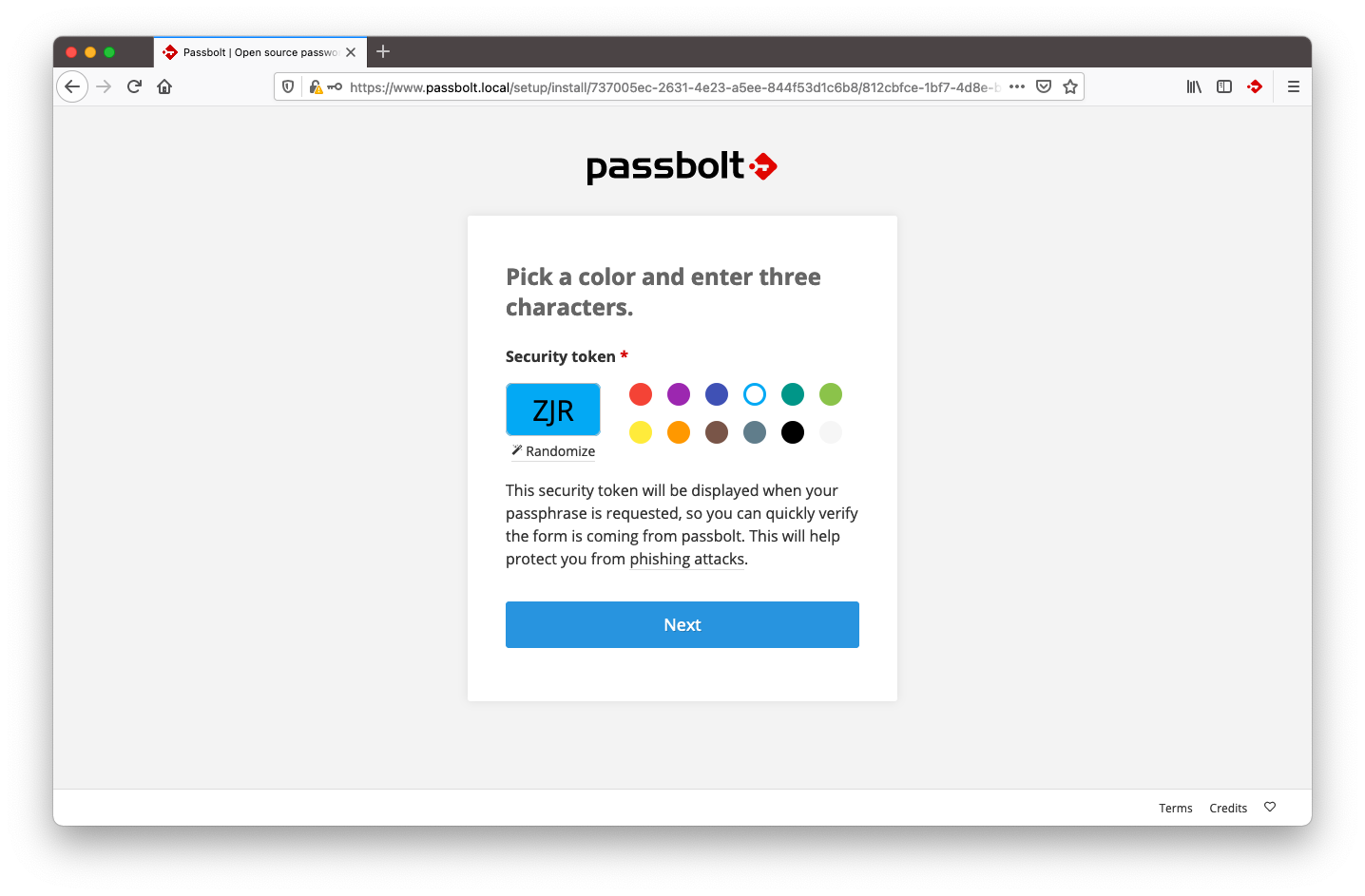
3.5. That's it!
Your administrator account is configured. You will be redirected to the login page of passbolt. Enjoy!
4. Setup HTTPS (optional, but highly recommended):
If you are planning to use this AWS instance in production, it is highly recommended to setup SSL. There are two main methods described below: